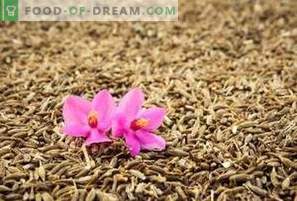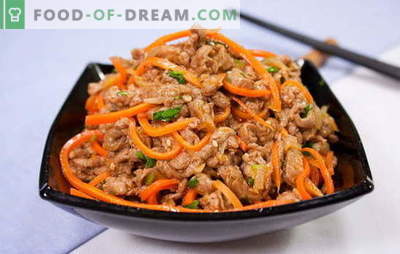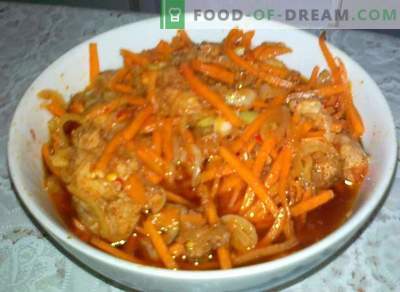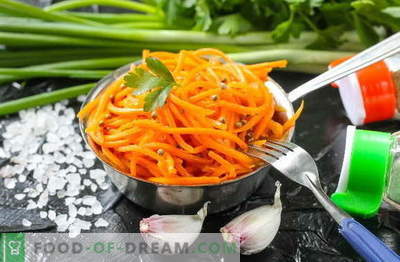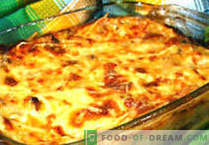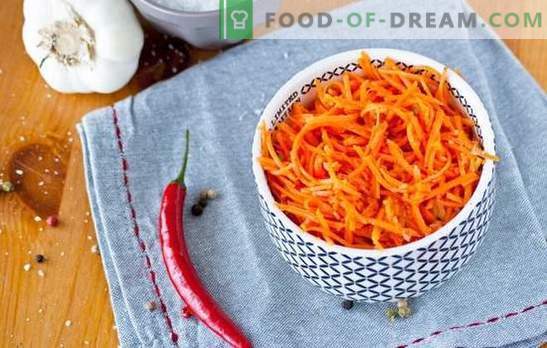
It is impossible to calmly go past Korean salads and snacks. Their scent is crazy, whets the appetite. You can buy in the store the usual seasoning for carrots and cook Korean salad yourself. But for some reason it does not work so fragrant. In fact, Koreans and those who know a lot about their kitchen never take ready-made spices from a bag. But then how to fill a snack?
Classic spices for Korean carrot
Koreans add different spices to each snack, emphasizing the taste of certain foods. But there is a basic set for fragrant salads. It is with him that the world-famous carrot is prepared. These seasonings are suitable for cabbage, eggplant, bell pepper and other vegetables.
How to fill the Korean carrot:
- Red pepper. It is he who gives the same burning taste. Pepper is usually already in the form of a hammer, so additional grinding is not necessary. Sometimes chopped sharp pods are added to Korean salads. In this case, you need to chop them very finely to ensure uniform distribution.
- Black and allspice. More used for flavor than for spice. That is why it is better to grind peas yourself.
- Coriander. It perfectly combines not only meat, gives Korean snacks a spicy flavor, but it is important not to overdo it.
- Sugar. This is a very important ingredient and natural flavor enhancer. Very often they are neglected. Sugar is suitable.
- Salt. You can use the most common cooking or sea salt.
- Vinegar, lemon juice. They are added for bright taste, but are also preservatives, pickled foods, prolong shelf life. No Korean salad or appetizer without acid is prepared.
By the way, in addition to spices, it is very important to use good butter. We usually take the usual sunflower. Koreans often mix it or replace it with sesame oil, which also affects the taste of snacks. Sometimes olive oil is added, which can also be done.
Garlic: yes or no
In the ready-made Korean carrot seasonings, you can often see dried garlic. It is really suitable for salads, but not always appropriate. If the appetizer is prepared for lunch, and the working day is expected ahead, then we can safely exclude it. If eggplants are present in the salad, then garlic is indispensable. He perfectly emphasizes the vegetable, reveals its taste. Also, garlic is added to Korean beetroot snacks, it removes a specific earthy flavor.
At home, it is advisable to use fresh garlic cloves. Dried vegetable does not give such an aroma, besides, it has a high concentration, you can miss with the amount. Fresh cloves finely chopped, added along with the rest of the spices. But sometimes for dressing a salad they make ordinary or hot garlic oil.
In the first embodiment, the cloves of garlic are cut and infused, then discarded.
In the second method, the garlic is fried to brown, removed, and Korean vegetables are filled with hot oil.
Ginger: yes or no
Ginger is another controversial supplement. Koreans sometimes inject fresh spine into their snacks, it can also be found in ready-made carrot seasonings. But there are some nuances: the flavor of ginger, not everyone likes, like the taste, the spine is contraindicated for problems with the stomach.
In combination with hot pepper and vinegar, ginger can provoke an aggravation of an ulcer or gastritis, it is undesirable to use it in case of cirrhosis, elevated blood pressure, as well as during pregnancy and HB.
If ginger is like, well tolerated, then it can be safely added to Korean snacks. Dry root is mixed with the rest of the spices. Fresh root is required to peel, chop. It is added immediately to the vegetables.
Sesame seeds?
Sesame or sesame is not found in seasoning bags, but is often present in ready-made Korean snacks. These seeds not only decorate, but also give a pleasant taste. You can put them in a classic carrot, they fit perfectly with it, but it is better to add to snacks from certain foods.
What sesame is combined with:
- eggplants;
- asparagus;
- chicken;
- mushrooms.
Do not add sunflower seeds except to cabbage salads and snacks. Sesame is rarely used raw, although this is not prohibited. More often it is fried. The process takes a few seconds, but during this time a very pleasant aroma appears. You can fry sesame simply in a dry frying pan or add to hot oil before pouring it into vegetables.
Soy sauce: not boring with it
Another controversial product. Who does not like soy sauce, he just did not taste it. In Korean dishes and snacks, it is very common. Despite its simple taste, soy sauce refines any product.
Fish, vegetables, meat with it is much tastier, a pleasant color appears, a rich aroma, a not-so-boring dish comes out.
Soy sauce can be added to the general dressing, but more often it marinates pieces of fish, chicken, mushrooms, and then injects it into a vegetable base. Sometimes mixed with lemon juice, vinegar, honey, they are perfectly combined.
How to add spices correctly
It is important not only to choose, buy and mix spices, but also to add them correctly. Never do they just pour into a ready-made salad, this can ruin everything. Also, do not “save” on seasonings. Then add some more spices will not work. It is better to pour a little more than you need. In any case, the part will drain to the bottom along with oil and vegetable juice.
The main nuances:
- If seeds are used (coriander, dill, peppercorns), they must be ground in a mortar. Grind with other spices. When rubbed, aromatic esters are released.
- Spices need to be mixed together first, and then poured into a Korean snack. This will ensure even distribution.
- To reveal the flavor and taste of Korean spices, they are heated. You can pour in the oil and pour the vegetables. But more often they pour it out for a snack, and then pour almost boiling oil on top, after which the snack is immediately served.
It is not customary to add fresh herbs to Korean salads and snacks. But dried herbs are allowed. It is desirable to grind or grind them so that large particles do not come across. Yet the main decoration of Korean dishes are the vegetables themselves. They beckon with their richness and bright color, so let them still delight with aroma and taste.









